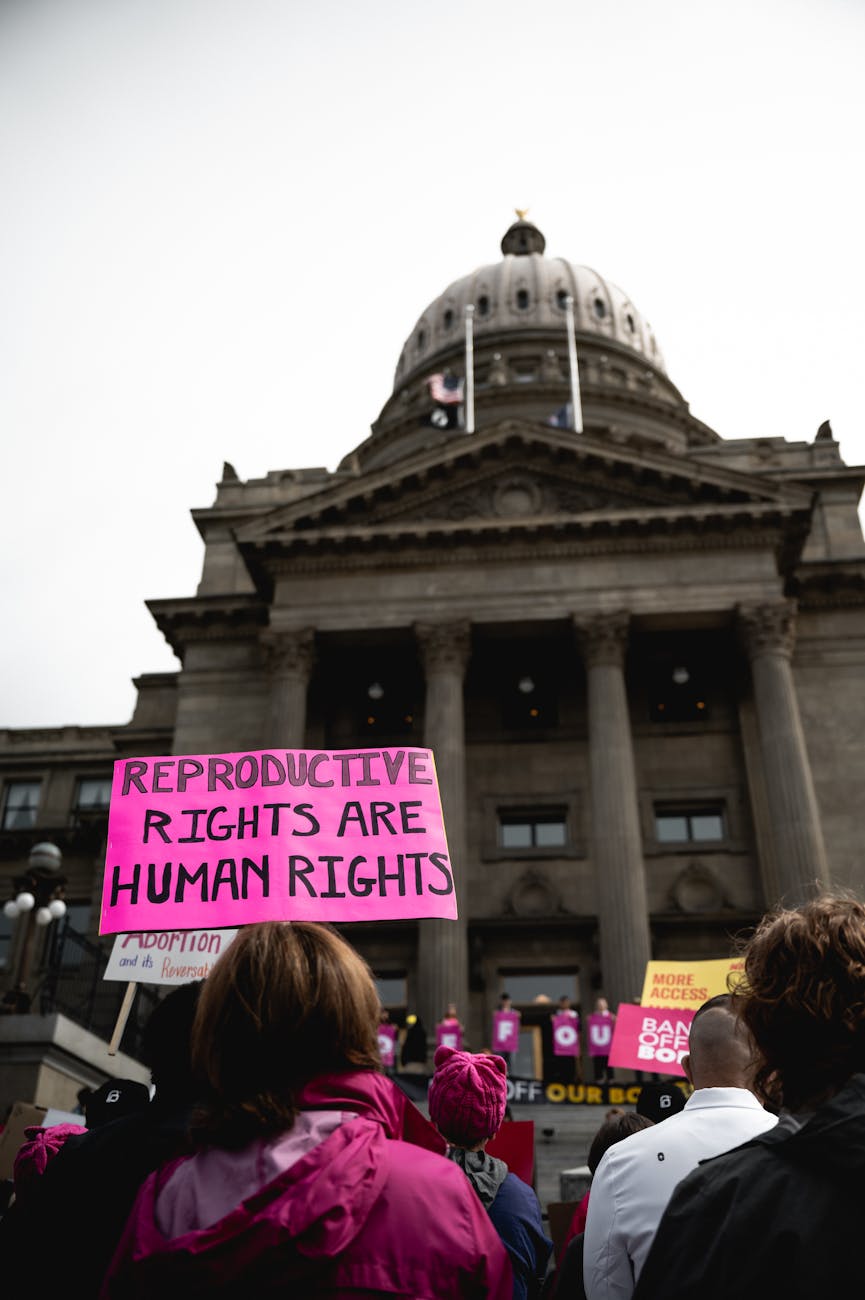Reproductive health education is often treated as a cultural battleground. In reality, it is one of the most rigorously evidenced, life-saving public goods in modern health policy. At its best—accurate, age-appropriate, and rights-affirming—reproductive health education equips young people and adults with the knowledge to plan their families, prevent disease, avoid sexual violence, and seek timely care. At its worst—missing, politicized, or replaced by misinformation—its absence is measured in higher maternal mortality, more unsafe abortions, and intergenerational cycles of poverty.
The global stakes are stark. United Nations agencies estimate that in 2023 roughly 260,000 women died from pregnancy-related causes, with sub-Saharan Africa accounting for about 70% of those deaths. Progress has plateaued since the mid-2010s in many places, threatening the world’s ability to reach the Sustainable Development Goal of fewer than 70 maternal deaths per 100,000 live births by 2030. (United Nations Population Fund, who.int, UNICEF DATA)
The burden is not evenly shared. Each year, an estimated 21 million girls aged 15–19 in developing regions become pregnant, and about 12 million give birth—outcomes tightly linked to gaps in schooling, child marriage, and access to contraception. Nearly half of all pregnancies worldwide are unintended; about 45% of abortions are unsafe, a leading cause of preventable maternal death. (who.int, United Nations Population Fund)
It is precisely here that education—delivered in schools, clinics, communities, and digital spaces—saves lives.
Why education works: the evidence base
Comprehensive sexuality education (CSE) is defined by WHO and UNESCO as accurate, age-appropriate learning that covers human development, relationships, consent, contraception, and rights. Systematic reviews and agency guidance converge on the same finding: when designed well and paired with youth-friendly services, CSE delays sexual initiation, increases contraceptive use, reduces unintended pregnancy, and improves knowledge about consent and violence. (who.int, unesdoc.unesco.org)
A growing body of impact evaluations strengthens that conclusion. In the United States, an empirical study of federal support for more comprehensive sex education found county teen birth rates fell by more than 3% in areas receiving this funding—an effect that compounded over time. Similar results appear in Europe and Central Asia case studies, including Estonia’s national school-based program, which independent assessments found to be cost-effective and associated with large improvements in contraceptive use among adolescents. (PMC, europarl.europa.eu)
UNFPA’s State of World Population report reframes the issue in terms of agency: unintended pregnancy is, above all, a denial of choice. As Executive Director Dr. Natalia Kanem put it during the 2022 launch, “Many unplanned babies are deeply loved. Yet… we must also acknowledge the denial of choice that gave rise to the pregnancies.” Education that centers choice and rights is the first line of prevention. (The United Nations in Viet Nam)
The WHO Director-General has been equally direct: women and girls must be able to freely exercise their sexual and reproductive health rights—principles that underpin both education and services. (who.int)
A cross-jurisdictional picture: Europe, Asia, the Americas, and Africa
Europe: systems that normalize knowledge—and the dividends that follow
Europe’s experience demonstrates how early, normalized instruction plus universal access to care drives outcomes. EU adolescent birth rates are among the world’s lowest, a pattern linked to routine classroom instruction and strong primary care. While Europe faces its own demographic and policy debates, countries with long-standing, curriculum-based programs—notably the Netherlands and Estonia—show consistently low teen pregnancy and high contraceptive use among youth. Estonia’s curriculum was rolled out nationally in the late 1990s; a formal evaluation found costs under ~€25 per student (2014 euros) and significant improvements in behaviors and outcomes. (europarl.europa.eu)
The Netherlands offers another instructive example: sexuality education is integrated across grades and emphasizes respect, consent, and practical skills. Comparative profiles and program documentation attribute Europe’s lowest teen pregnancy rates to that mix of instruction and services. (education-profiles.org, rutgers.international)
Europe’s broader fertility decline—EU total fertility at 1.38 in 2023—is sometimes invoked to argue that CSE “discourages families.” This confuses correlation with causation: the drivers of Europe’s low fertility are overwhelmingly economic and structural (housing costs, job precarity, delayed partnership), not youth SRH education. Meanwhile, the safety benefits of education—in fewer adolescent births and unsafe abortions—are well documented. (European Commission)
Asia: scale, diversity, and reform in motion
Asia spans some of the world’s most ambitious adolescent-health programs and most acute service gaps. In India, large-scale efforts under the National Adolescent Health Mission and allied initiatives have gradually expanded CSE-related content in and out of school. Peer-education and life-skills approaches have improved knowledge and service uptake, though policy fragmentation and uneven state-level implementation remain challenges. Reviews of Indian curricula and implementation highlight promising practices—community engagement, trained facilitators, and linkage to youth-friendly services. (BioMed Central, PMC, populationfoundation.in)
Across the region, WHO and UN partners emphasize CSE as a core component of adolescent health. Where education is delayed or restricted, adolescent pregnancy, child marriage, and unsafe abortion persist at higher rates—particularly in areas with service shortages or strong social stigma. (who.int)
The Americas: two stories—steady gains and stubborn gaps
The United States has seen a long-term decline in teen births—due in part to more comprehensive instruction and improved contraceptive access—yet outcomes diverge sharply by state and policy environment. Evidence indicates that comprehensive approaches outperform abstinence-only models in reducing teen births and improving sexual health behaviors. (PMC)
In Latin America and the Caribbean (LAC), adolescent fertility remains the second highest globally, after sub-Saharan Africa—with roughly 1.6 million adolescent births each year, or one every 20 seconds. Regional health agencies have prioritized joint action to expand prevention and services, underscoring persisting need and the importance of schooling plus community-based education. (UNFPA LAC, paho.org)
The pandemic exposed the fragility of those gains. Early UNFPA modeling warned that tens of millions could lose access to contraception amid service disruptions, risking millions of unintended pregnancies and surges in gender-based violence. Those shocks reaffirmed a core lesson: when systems fracture, education and rights-based information become lifelines, helping people navigate shortages and seek alternatives safely. (TIME)
Africa: the epicenter of preventable mortality—and a roadmap that works
Sub-Saharan Africa remains the epicenter of global maternal mortality, with roughly 70% of deaths worldwide in 2023, despite important declines since 2000. Adolescent birth rates are among the world’s highest, and early childbearing is strongly associated with school dropout, economic exclusion, and higher maternal risk. (who.int, UNICEF DATA)
There are bright spots. The Eastern and Southern Africa (ESA) Ministerial Commitment—a regional pact led by UNESCO and UNFPA since 2013—has expanded CSE and youth-friendly SRH services across more than 20 countries. Independent evaluations document momentum in policy adoption, teacher training, and service linkage, though implementation quality varies and outreach to out-of-school youth remains a frontier. (PMC, UNFPA ESARO)
At the same time, conflict and austerity are reversing gains. WHO and UNICEF warn that aid cuts and health-system shocks risk “pandemic-like effects” on maternal deaths in fragile settings, where education and service continuity are hardest to maintain. (The Guardian)
What “education” must include to save lives
- Accuracy and breadth
Curricula should cover anatomy and puberty; contraception and dual protection; STI/HIV prevention; consent, coercion, and GBV; pregnancy options and safe care pathways; and digital safety. WHO and UNESCO emphasize age-appropriate, spiral curricula that build skills over time and treat relationships and rights as central, not peripheral. (who.int, unesdoc.unesco.org) - Teacher preparation and supportive school environments
Programs fail when teachers are untrained or uncomfortable. European case studies (Estonia) show that teacher capacity and school leadership are decisive—and relatively inexpensive compared to the costs of adolescent pregnancy and unsafe abortion. (europarl.europa.eu) - Service linkages and confidentiality
Education works best when paired with youth-friendly services: respectful providers, affordable contraception (including long-acting methods), and confidential counseling. Where feasible, schools and community centers should host regular clinic hours or referrals to adolescent-friendly sites. Evidence from the Americas suggests this pairing is vital to sustaining gains. (PMC) - Community partnership and cultural fluency
Parents, faith leaders, and traditional authorities influence norms and uptake. Programs succeed when they engage communities early, clarify content, and demonstrate alignment with shared goals—health, dignity, and safety—rather than positioning education as culture-erasing. Evaluations in Africa and Asia repeatedly highlight this as a determinant of scale and sustainability. (PMC) - Digital literacy and myth-busting
Young people increasingly learn about sex online. Public agencies and civil society need credible digital content in local languages, coupled with algorithm-aware myth-busting campaigns. (UNFPA has piloted such approaches, from social-media analysis to midwife-support tools, with promising reach.) (WIRED)
Addressing common objections—clearly and with evidence
- “Comprehensive education encourages early sex.”
Multiple systematic reviews and program evaluations find no evidence that well-designed CSE accelerates sexual initiation; rather, it delays initiation and increases protection when sex occurs. The alternative—silence or abstinence-only instruction—has not produced better outcomes. (unesdoc.unesco.org) - “Education undermines cultural values.”
In every region, programs that lead with respect, consent, family communication, and responsibility see higher acceptance. European “whole-school” models and African community-embedded initiatives show that cultural fluency strengthens—not weakens—program legitimacy. (europarl.europa.eu, PMC) - “Mortality is about hospitals, not classrooms.”
It is about both. WHO’s latest figures make clear that meeting the maternal-mortality target requires faster progress across the care continuum—including prevention via education and contraception. Without reducing unintended pregnancies and unsafe abortions, emergency obstetric care alone cannot close the gap. (who.int)
The policy implications—region by region
Europe
Protect and modernize CSE standards amid political shifts; maintain teacher training and primary-care linkages. Migration-sensitive curricula and multilingual resources can prevent widening disparities among newcomer populations. (icmec.org)
Asia
Prioritize national coherence (clear mandates and quality standards) while allowing state/province adaptation. Invest in peer educators and confidential adolescent services; ensure content addresses early marriage and gender-based violence. (BioMed Central)
Americas
In the U.S., strengthen comprehensive models and undo policy fragmentation across states; in LAC, scale school-community programs and target very early pregnancy (10–14) with protective schooling and social services. Cash-plus and keep-girls-in-school programs show promise when paired with CSE. (paho.org, UNFPA LAC)
Africa
Double down on the ESA Commitment model: measurable standards, teacher training, and in-school/out-of-school reach, especially where conflict displaces learners. Blend education with contraceptive choice, self-care tools (e.g., pregnancy tests, HIV self-tests), and safe referral for complications. Protect SRHR budgets from aid volatility, which WHO warns is translating into avoidable deaths. (PMC, The Guardian)
The cost of inaction
When education is politicized or withdrawn, the consequences arrive quickly: more unintended pregnancies, more unsafe abortions, higher maternal deaths, and wider inequalities, particularly for adolescents, rural communities, and marginalized groups. UN agencies caution that in fragile or conflict-affected settings, maternal mortality can spike fivefold compared with stable contexts—dynamics aggravated when health workers are scarce and schools are shut. (UNICEF DATA)
The economic bill is steep. Adolescent pregnancy depresses girls’ educational attainment and lifetime earnings; households absorb medical and caregiving costs; and health systems face preventable emergencies. While precise estimates vary by country, cross-regional studies align on a simple truth: prevention via education and access is dramatically cheaper than treating complications after the fact. (europarl.europa.eu)
A rights-based North Star
At the 2025 Commission on the Status of Women, UN Women’s Sima Bahous captured the moment’s urgency: “We will not back down” in securing rights and equality for women and girls. In reproductive health, that pledge begins with the right to accurate information and the capacity to act on it. Or as the WHO chief has insisted, women and girls must be able to exercise their SRHR freely, and societies must make that possible—through classrooms, clinics, and community norms. (UN Women, who.int)
What CLIP will champion
Under WARRIOR (Women’s Advocacy for Reproductive Rights, Informed Options, and Resources, CLIP will pursue four lines of action aligned with the evidence:
- Curriculum partnerships: Co-design locally adapted, age-appropriate modules with education authorities, drawing on WHO/UNESCO standards and integrating consent, GBV prevention, and digital literacy. (who.int, unesdoc.unesco.org)
- Provider linkages: Establish referral pathways and periodic youth-friendly clinic hours in schools and community hubs; ensure contraceptive choice and confidentiality. (who.int)
- Community dialogue: Convene parents, religious and traditional leaders, and youth advocates to de-polarize content and emphasize shared goals—health, dignity, and opportunity. (PMC)
- Data and accountability: Track outcomes—knowledge, service uptake, adolescent births, and GBV disclosures—and publish results to build public trust and policy staying power. (unesdoc.unesco.org)
Conclusion
Reproductive health education is not a luxury or a Western import. It is a public-health necessity and a human right, validated across regions as diverse as Tallinn and Tamale, Rotterdam and Rajasthan, Rio and Kigali. It saves lives by preventing what can be prevented and by illuminating safe paths when prevention fails. In a world where half of pregnancies are unintended and far too many abortions are unsafe, education is the first, least costly, and most humane intervention we possess. The right to choose begins with the right to know.
Selected Sources
- WHO & UN partners, Trends in Maternal Mortality 2000–2023; WHO Fact Sheet on Maternal Mortality; UNICEF data portal. (United Nations Population Fund, who.int, UNICEF DATA)
- UNFPA, State of World Population 2022: Seeing the Unseen (unintended pregnancy) and press materials. (United Nations Population Fund)
- WHO & UNESCO guidance on comprehensive sexuality education. (who.int, unesdoc.unesco.org)
- Eurostat fertility and demographic indicators (EU, 2023). (European Commission)
- PAHO/UNFPA/UNICEF statements on adolescent fertility in LAC. (UNFPA LAC, paho.org)
- ESA Ministerial Commitment evaluations and updates (UNESCO/UNFPA). (PMC, UNFPA ESARO)
- U.S. evidence on comprehensive sex education and teen births. (PMC)
- Leadership statements: UN Women Executive Director Sima Bahous (CSW69, March 2025); WHO Director-General statements on SRHR. (UN Women, who.int)









